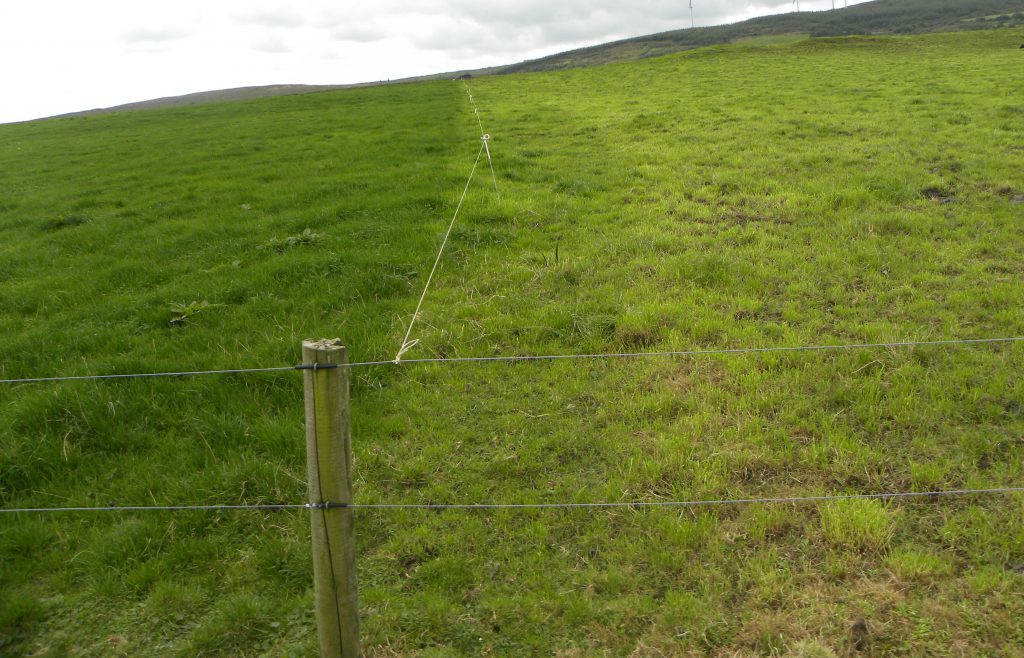Business and technology drystock advisor with Teagasc, Keith Fahy has outlined how farmers an access grants for bovine fencing and meal bins under the Targeted Agriculture Modernisation Scheme (TAMS 3).
The recent wet weather has highlighted the importance of having enough forage on farms and budgeting for “unexpected turbulence”, he said and added that feeding more meal and looking for silage are two common activities among all farms.
By putting in more bovine fencing and splitting fields into better paddocks, farmers may operate a better rotational system when compared to set stocking, according to the drystock advisor.
“Grazing rotationally will result in better live weight gains, better grass growth and utilisation and will inevitably allow farmers to bale excess surplus paddocks, which is phenomenal feed for young stock and finishers during our ever longing winter periods,” he said.
Bovine fencing
Farmers can apply for bovine fencing under TAMS 3 on their own individual Ag-Food account or via their agricultural planner’s agent account. All applications must be completed online.
A map of the field and a line drawn in where the proposed fence is to go along with the linear metres is required, Fahy said. There are reference costs on the system which will calculate the maximum a farmer is entitled to receive.
The grant is 40% for the majority of farmers or 60% for young trained farmers, according to Fahy. A condition is that farmers must keep bovine stock for a minimum of five years after claiming the grant.
Planning permission will not be necessary in most cases but may be required or sought in Special Areas of Conservation (SACs), according to the drystock advisor.
There are three sub sections in which farmers can apply for three different grants under the bovine fencing grant, he said. These are €2.77/linear metre, €361/gateway and €634/solar fencer.
If the fencing supplies are less than the reference costs, the grant will be paid on the lower amount, he said. Specifications can be sought in the terms and conditions for TAMS 3 on the Department of Agriculture Food and Marine’s (DAFM) website.

The minimum amount of investment which is eligible for approval is €2,000. Farmers must be tax compliant and will need to show ownership details or a lease agreement on the lands where the proposed fencing is to take place, he said.
Farmers must also complete a half-day TAMS training course which covers health and safety, as well as other related topics. Timber stakes and galvanised steel stakes are also becoming “very popular”, he said.
“A large number of the farmers I deal with are putting down a lot of ‘Versalock’ and ‘Clipex’ steel stakes. Some of these possess a 30-year guarantee and can clip on or screw in insulators,” the drystock advisor said.
Meal bins
Meal bins are also a “very common” application for drystock farmers in relation to the TAMS grant, Fahy said. This can also be found under the TAMS 3 Animal Welfare and Nutrient Storage Scheme (AWNSS).
There are two sub sections in the application for the meal bins which allow farmers to apply for a singular or a split meal bin. There are different reference costs for both bins as the split bin is more expensive, he said.
Split bins are popular amongst mixed farmers where beef and sheep nuts can be kept separate or indeed drystock farmers, whereby young stock feed can be kept separate to finishing meal, the drystock advisor said.

Fahy said one area to be mindful of is the VAT reclaim. “There seems to have been changes in recent times in the revenue whereby VAT had been reclaimable on meal bins but seems to have changed in the last number of months,” he said.
The grant rate for the meal bins is also similar to the bovine fencing where a rate of 40% is attainable for farmers, unless they are a young trained farmer in which case they may qualify for the 60% rate, according to the drystock advisor.
“It must also be noted that farmers should apply for a bin big enough or possibly slightly in excess of what they require, incase they change their mind when purchasing the bin.
“The reason for this being that farmers can reduce the size of the bin once approval but cannot get a grant on a bin bigger than the [approved] size,” the Teagasc drystock advisor said.
A farmyard sketch is required along with ownership detail or a lease agreement. Applications must be applied in relation to metres cubed and not tonnes. This is explained further on the terms and conditions page on the DAFM website.
